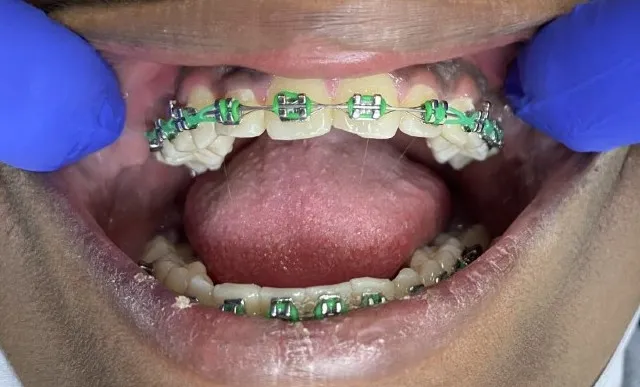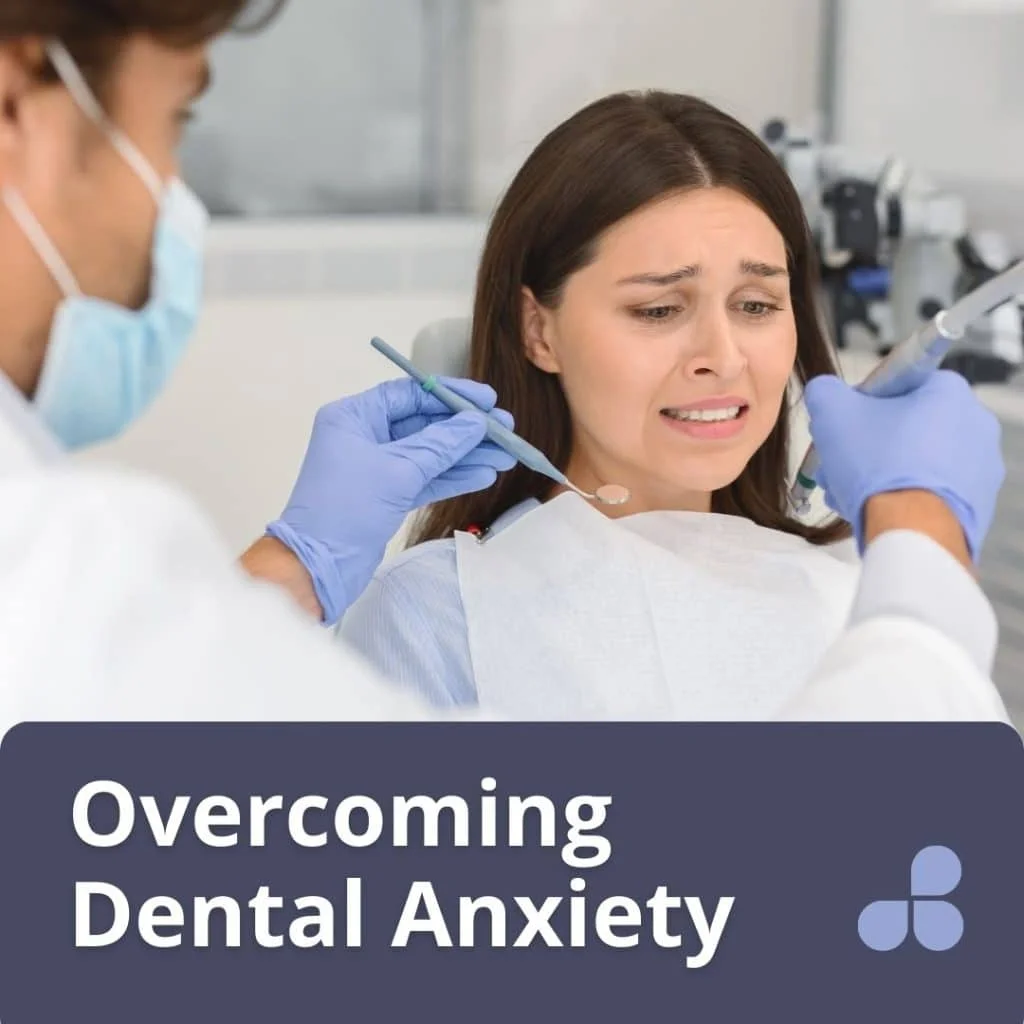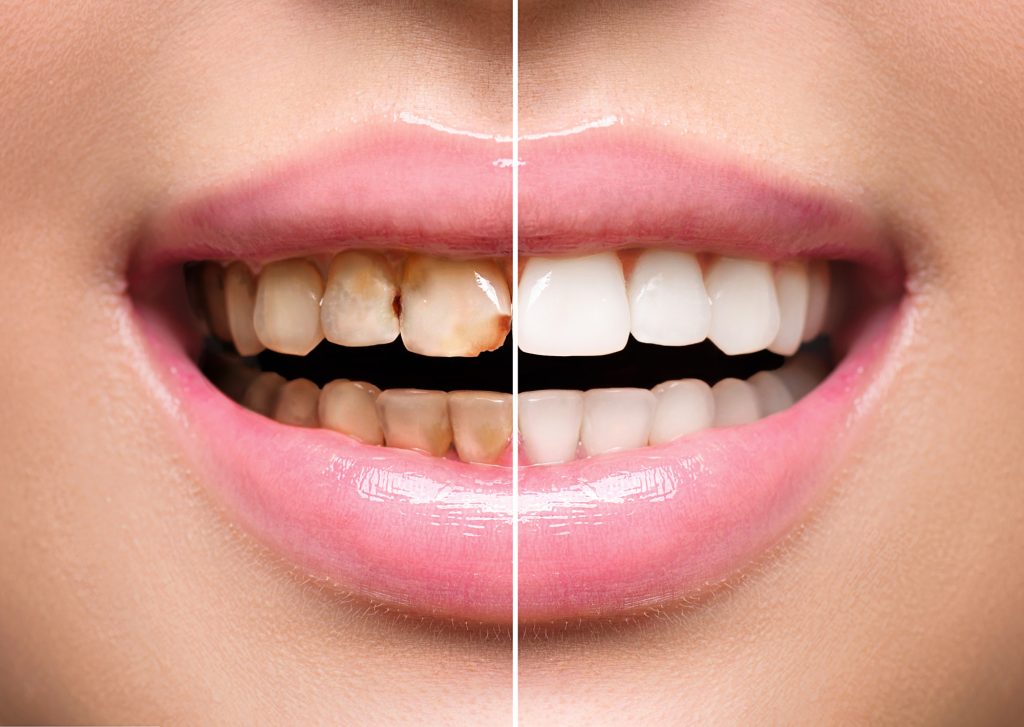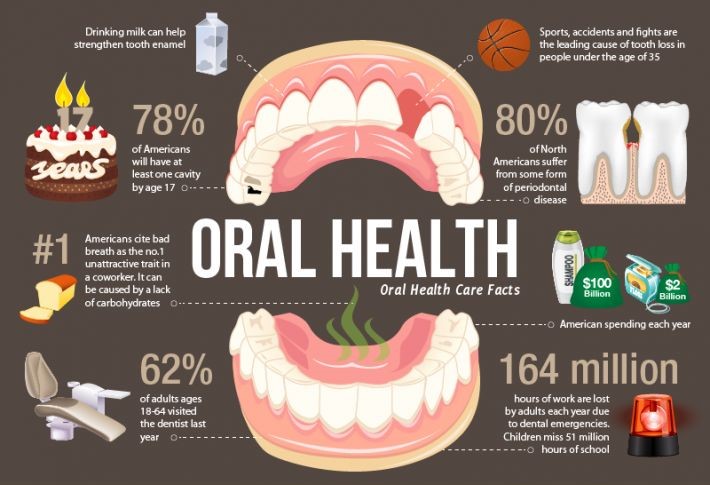Bad Teeth Understanding the Causes, Symptoms, and Solutions
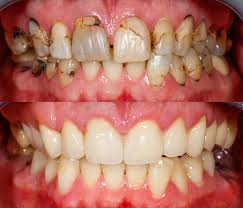
Bad teeth are a widespread concern that can have significant implications for both oral health and overall well-being. From cavities and decay to gum disease and misalignment, various dental issues can lead to bad teeth, affecting not only appearance but also functional aspects of oral health. This comprehensive guide delves into the causes, symptoms, consequences, and potential solutions for bad teeth.
What Are Bad Teeth?
Bad teeth refer to teeth that are decayed, rotted, misaligned, stained, broken, or otherwise compromised in ways that impact oral health and aesthetics. This condition encompasses a wide range of issues, such as:
- Tooth Decay and Cavities: The destruction of tooth enamel due to plaque buildup, poor oral hygiene, and high sugar consumption, leading to cavities and tooth rot.
- Gum Disease (Periodontal Disease): An infection of the tissues that hold your teeth in place, typically resulting from poor brushing and flossing habits that allow plaque—a sticky film of bacteria—to build up on the teeth and harden.
- Misaligned, Crooked, or Broken Teeth: Teeth that are out of proper alignment, chipped, or broken due to injury, genetics, or harmful habits like teeth grinding.
- Tooth Discoloration: Staining or yellowing of the teeth caused by dietary factors, smoking, and lack of regular brushing and professional cleaning.
Common Causes of Bad Teeth
1. Poor Oral Hygiene Practices
Neglecting regular brushing, flossing, and dental check-ups can lead to the accumulation of plaque and tartar, which are primary contributors to tooth decay, cavities, and gum disease. Without proper hygiene, food particles and bacteria linger in the mouth, causing decay and inflammation.
2. Diet High in Sugar and Acid
Frequent consumption of sugary snacks, sodas, and acidic foods erodes the enamel, leading to cavities and tooth decay. Sugars feed the bacteria in plaque, which produces acids that wear down the tooth surface.
3. Smoking and Tobacco Use
Tobacco use, including smoking and chewing, significantly increases the risk of gum disease, tooth decay, and oral cancers. Nicotine and tar in tobacco can cause staining, reduce blood flow to the gums, and weaken the body’s ability to fight infections in the mouth.
4. Genetic Factors
Some people are genetically predisposed to dental issues such as weak enamel, misalignment, or a susceptibility to cavities and gum disease. Genetics can influence the size, shape, and alignment of teeth, making some individuals more prone to problems than others.
5. Chronic Conditions and Medications
Certain medical conditions like diabetes can affect oral health by reducing the body’s resistance to infection, making gum disease more severe. Some medications also reduce saliva flow, leading to dry mouth and increased risk of decay.
6. Age and Wear
As people age, their teeth naturally wear down and can become more susceptible to cavities, cracks, and other damage. The cumulative effects of years of poor oral hygiene, dietary habits, and general wear and tear can lead to bad teeth in older adults.
7. Dental Trauma
Accidents, sports injuries, or biting on hard objects like popcorn kernels can cause teeth to crack, chip, or break, leading to an increased risk of decay and other complications if not treated promptly.
Symptoms and Signs of Bad Teeth
1. Toothache and Sensitivity
Persistent pain or sensitivity to hot, cold, or sweet foods and drinks often indicates tooth decay or cavities. This discomfort usually occurs when decay penetrates the tooth enamel and reaches the more sensitive inner layers.
2. Visible Cavities or Holes
Cavities may appear as visible pits or holes in the teeth, often dark in color, indicating advanced decay. These can become food traps, exacerbating the problem by harboring bacteria and food particles.
3. Swollen, Bleeding Gums
Gum disease manifests through symptoms such as swollen, tender, and bleeding gums, especially during brushing or flossing. These symptoms suggest the presence of gingivitis, the earliest stage of gum disease.
4. Bad Breath (Halitosis)
Persistent bad breath can be a sign of bad teeth, as decaying teeth harbor bacteria that produce foul odors. Regular brushing and flossing may temporarily alleviate the smell, but underlying decay or gum disease needs professional treatment.
5. Tooth Discoloration
Teeth may appear yellow, brown, or black due to staining from foods, beverages, smoking, or the presence of decay. Discoloration can also result from enamel erosion, revealing the darker dentin layer underneath.
6. Loose or Shifting Teeth
Gum disease can cause teeth to become loose as the supporting bone and gum tissue deteriorate. This can also change the alignment of your teeth, causing shifts or gaps.
7. Pus or Abscess Formation
In severe cases of decay, infections can develop, leading to abscesses—a painful collection of pus that forms in the gums or at the root of a tooth. This condition requires immediate dental attention.
Consequences of Bad Teeth
1. Impact on Overall Health
Bad teeth can contribute to systemic health problems. Infections from decayed teeth can spread to other parts of the body, potentially leading to conditions like endocarditis (infection of the heart lining) or complications with diabetes.
2. Gum Disease and Tooth Loss
Untreated tooth decay and gum disease can lead to tooth loss, which affects chewing, speaking, and overall quality of life. Missing teeth can also lead to bone loss in the jaw, changing the shape of your face over time.
3. Psychological and Social Effects
Having visibly bad teeth can affect self-esteem, leading to reluctance in social interactions and smiling. The stigma associated with bad teeth can impact one’s professional and personal life, causing anxiety and depression.
4. Increased Risk of Heart Disease
Studies have shown a correlation between gum disease and heart disease. The bacteria from gum infections can enter the bloodstream and contribute to the formation of clots or inflammation of the heart’s arteries.
5. Digestive Issues
Problems with teeth can affect your ability to chew food properly, leading to digestive issues. Chewing is the first step in the digestive process, and inadequate chewing can lead to larger food particles entering the digestive tract, which can cause bloating, indigestion, and nutrient absorption issues.
Can Bad Teeth Make You Sick? Understanding the Link Between Oral Health and Overall Health
How to Fix Bad Teeth: Treatment Options
1. Professional Dental Care
Regular visits to a dentist are crucial for preventing and treating bad teeth. Professional cleanings, fillings, crowns, root canals, and extractions are common procedures to address various dental problems. Early intervention can prevent minor issues from becoming major ones.
2. Dental Restoration Procedures
For decayed or broken teeth, restoration procedures such as crowns, bridges, veneers, or dental implants can restore function and appearance. Veneers and crowns can cover and protect damaged teeth, while implants can replace missing teeth altogether.
3. Orthodontic Treatments
Misaligned teeth can be corrected with braces, aligners, or other orthodontic devices. Straightening teeth not only improves appearance but also reduces the risk of cavities and gum disease by making teeth easier to clean.
Bad Teeth? Here’s Everything You Need to Know About Getting Braces for a Healthier, Straighter Smile
4. Improving Oral Hygiene
Consistent brushing with fluoride toothpaste, flossing daily, and using mouthwash can significantly reduce the risk of developing bad teeth. Regular oral hygiene removes plaque, prevents tartar buildup, and maintains healthy gums.
5. Diet and Lifestyle Changes
Reducing sugar intake, avoiding acidic foods and drinks, and quitting smoking can greatly improve dental health. A balanced diet rich in calcium and vitamin D supports strong teeth and bones.
6. Use of Fluoride
Fluoride strengthens enamel and helps prevent decay. Using fluoride toothpaste, drinking fluoridated water, and receiving fluoride treatments from your dentist can provide additional protection against cavities.
7. Treating Dry Mouth
If medications or conditions cause dry mouth, which increases the risk of tooth decay, strategies such as drinking more water, chewing sugar-free gum, or using saliva substitutes can help maintain moisture in the mouth.
8. Addressing Tooth Sensitivity
Sensitive teeth can be managed by using toothpaste designed for sensitive teeth, avoiding extreme temperatures in food and drink, and addressing the underlying causes like gum recession or enamel wear.
Prevention Tips for Maintaining Healthy Teeth
1. Brush and Floss Regularly
Brush your teeth at least twice a day with fluoride toothpaste and floss daily to remove plaque and food particles that a toothbrush can’t reach.
2. Regular Dental Check-ups
Visit your dentist every six months for cleanings and check-ups. Regular visits help catch problems early and keep your teeth and gums healthy.
3. Avoid Sugary and Acidic Foods
Limit foods and drinks high in sugar and acid, such as candy, sodas, and fruit juices, which can erode enamel and lead to decay.
4. Protect Your Teeth
If you play sports, wear a mouthguard to protect your teeth from injury. Avoid using your teeth as tools to open packages or bite nails.
5. Stop Smoking
Tobacco use is a major cause of gum disease and oral cancer. Quitting smoking improves oral health and overall well-being.
6. Stay Hydrated
Drinking water helps wash away food particles and bacteria. Staying hydrated also supports saliva production, which is essential for maintaining a healthy mouth.
7. Use Dental Sealants
Dental sealants are thin, protective coatings applied to the chewing surfaces of the back teeth (molars) to prevent cavities.
Conclusion
Bad teeth are a significant issue that can affect more than just your smile. From poor oral hygiene and diet to genetics and lifestyle choices, many factors contribute to dental problems. The key to overcoming bad teeth lies in understanding the causes, recognizing the symptoms, and taking proactive steps toward prevention and treatment. With regular dental care, good oral hygiene, and healthy lifestyle choices, you can maintain healthy teeth and gums for a lifetime.
Is It Possible to Fix Bad Teeth?
Yes, it is possible to fix bad teeth through various dental treatments and lifestyle changes. The appropriate method depends on the specific issue—whether it’s decay, misalignment, discoloration, or damage. Common treatments include:
- Fillings and Crowns: For cavities and decayed teeth, dentists can remove the decayed material and fill the cavity with materials such as resin or amalgam. Crowns can be used for severely damaged teeth to restore their shape, strength, and appearance.
- Braces and Aligners: Misaligned or crooked teeth can be corrected with orthodontic treatments like braces or clear aligners. These treatments straighten teeth over time, improving both function and aesthetics.
- Veneers and Bonding: Veneers are thin, custom-made shells that cover the front surface of teeth to improve appearance, while bonding involves applying a tooth-colored resin to repair chipped, discolored, or slightly misaligned teeth.
- Dental Implants: For missing or irreparably damaged teeth, dental implants offer a permanent solution by replacing the tooth root with a metal post and attaching a crown on top.
- Professional Teeth Whitening: To address discoloration, professional whitening treatments can remove stains and brighten teeth significantly.
Fixing bad teeth often requires a combination of these treatments, guided by a dentist’s evaluation of the individual’s needs and oral health.
How Do You Treat Bad Teeth?
Treating bad teeth involves addressing the specific dental issues present, which can range from decay and cavities to gum disease and structural problems. Here’s a comprehensive approach to treating bad teeth:
- Improving Oral Hygiene: The first step in treating bad teeth is maintaining good oral hygiene. This includes brushing at least twice a day with fluoride toothpaste, flossing daily, and using mouthwash to reduce bacteria and plaque.
- Regular Dental Visits: Professional cleanings and check-ups every six months are crucial. Dentists can spot early signs of problems and provide preventive care, such as fluoride treatments or dental sealants.
- Restorative Treatments:
- Fillings: For cavities, the decayed part of the tooth is removed and filled.
- Root Canals: If decay reaches the tooth pulp, a root canal may be needed to remove the infected tissue and seal the tooth.
- Crowns: For severely damaged teeth, crowns can protect and restore them.
- Orthodontic Treatments: Braces or aligners correct misaligned teeth, which can prevent future issues like uneven wear and difficulty cleaning.
- Gum Disease Treatment: If gum disease is present, treatments may include scaling and root planing (deep cleaning), antibiotics, or even surgery in advanced cases to restore gum health.
- Lifestyle Changes: Quitting smoking, reducing sugar intake, and adopting a balanced diet can significantly improve oral health and help prevent further deterioration of teeth.
Each treatment plan should be tailored to the individual’s specific dental needs, which a dentist can determine during a thorough examination.
Can Bad Teeth Be Improved?
Yes, bad teeth can be significantly improved with proper dental care and treatment. The extent of improvement depends on the nature and severity of the dental issues. Here’s how bad teeth can be improved:
- Cosmetic Enhancements: Cosmetic dentistry offers several options, such as teeth whitening, veneers, and bonding, to enhance the appearance of discolored, chipped, or uneven teeth.
- Orthodontic Solutions: For those with crooked or misaligned teeth, braces or clear aligners can gradually straighten teeth, improving both appearance and oral function.
- Restorative Procedures: Treatments like crowns, bridges, and implants can restore the function and look of damaged or missing teeth, leading to a healthier and more attractive smile.
- Preventive Care: Consistent preventive care, including good oral hygiene, regular dental check-ups, and dietary adjustments, plays a crucial role in maintaining improvements and preventing future problems.
With the right combination of professional dental care and personal oral hygiene practices, even severely compromised teeth can be improved, leading to better oral health and a more confident smile.
Is It Normal to Have Bad Teeth?
While having some dental issues is common, such as occasional cavities or minor gum inflammation, consistently having bad teeth is not considered normal and often reflects underlying issues that need attention. Common causes of bad teeth include:
- Poor Oral Hygiene: Inadequate brushing and flossing lead to plaque buildup, which can cause cavities, decay, and gum disease.
- Dietary Habits: High sugar and acidic foods contribute to enamel erosion and cavities.
- Lack of Dental Care: Skipping regular dental visits prevents early detection and treatment of dental problems.
Having bad teeth can affect not only your oral health but also your overall well-being, self-esteem, and quality of life. It is important to address the root causes and seek professional dental care to improve your dental health.
How to Remove Bad Teeth at Home?
It is not recommended to remove bad teeth at home. Extracting a tooth requires professional skills to ensure it’s done safely and without causing further complications, such as infection or damage to surrounding teeth and tissues. However, you can take the following steps at home to manage and care for bad teeth:
- Pain Management: Use over-the-counter pain relievers such as ibuprofen to manage toothache temporarily. Rinsing with warm salt water can also help reduce pain and swelling.
- Oral Hygiene: Maintain good oral hygiene by brushing twice a day, flossing, and using antiseptic mouthwash to reduce bacteria and prevent further decay.
- Temporary Fillings: If you have a cavity or a broken tooth causing discomfort, temporary dental filling materials available at drugstores can provide short-term relief until you see a dentist.
- Avoid Hard or Sticky Foods: Eating soft foods can prevent further damage to a compromised tooth and reduce pain.
- Visit a Dentist Promptly: Ultimately, the best way to address bad teeth is to visit a dentist. They can safely remove a tooth if necessary and provide proper treatment to prevent complications.
Attempting to remove a tooth at home can lead to severe pain, infection, and further dental problems, so professional dental care is essential.
Can Bad Teeth Heal?
Teeth cannot heal themselves in the way that other body tissues can. However, minor issues such as early-stage cavities or enamel erosion can be halted or even partially reversed with good oral hygiene and fluoride treatments. For more severe conditions like advanced decay or gum disease, professional intervention is required. Here’s how different dental issues can be managed:
- Enamel Remineralization: Using fluoride toothpaste and treatments can help remineralize and strengthen weakened enamel, which is the outer layer of the tooth.
- Gum Disease Management: Early-stage gum disease (gingivitis) can be reversed with proper brushing, flossing, and professional cleanings. More advanced gum disease requires more intensive treatments such as scaling and root planing.
- Cavities and Decay: Cavities do not heal on their own; they require dental fillings or other restorative treatments. Preventive measures can stop the progression of decay but do not restore the lost structure of the tooth.
- Cracked or Broken Teeth: Unlike bones, cracked or broken teeth do not heal. These require dental procedures such as crowns, bonding, or veneers to restore the tooth.
Therefore, while some minor issues can be managed or stopped from worsening with good care, significant damage requires professional dental intervention. Regular check-ups, maintaining excellent oral hygiene, and addressing issues promptly are the best ways to keep teeth healthy and prevent further damage.

